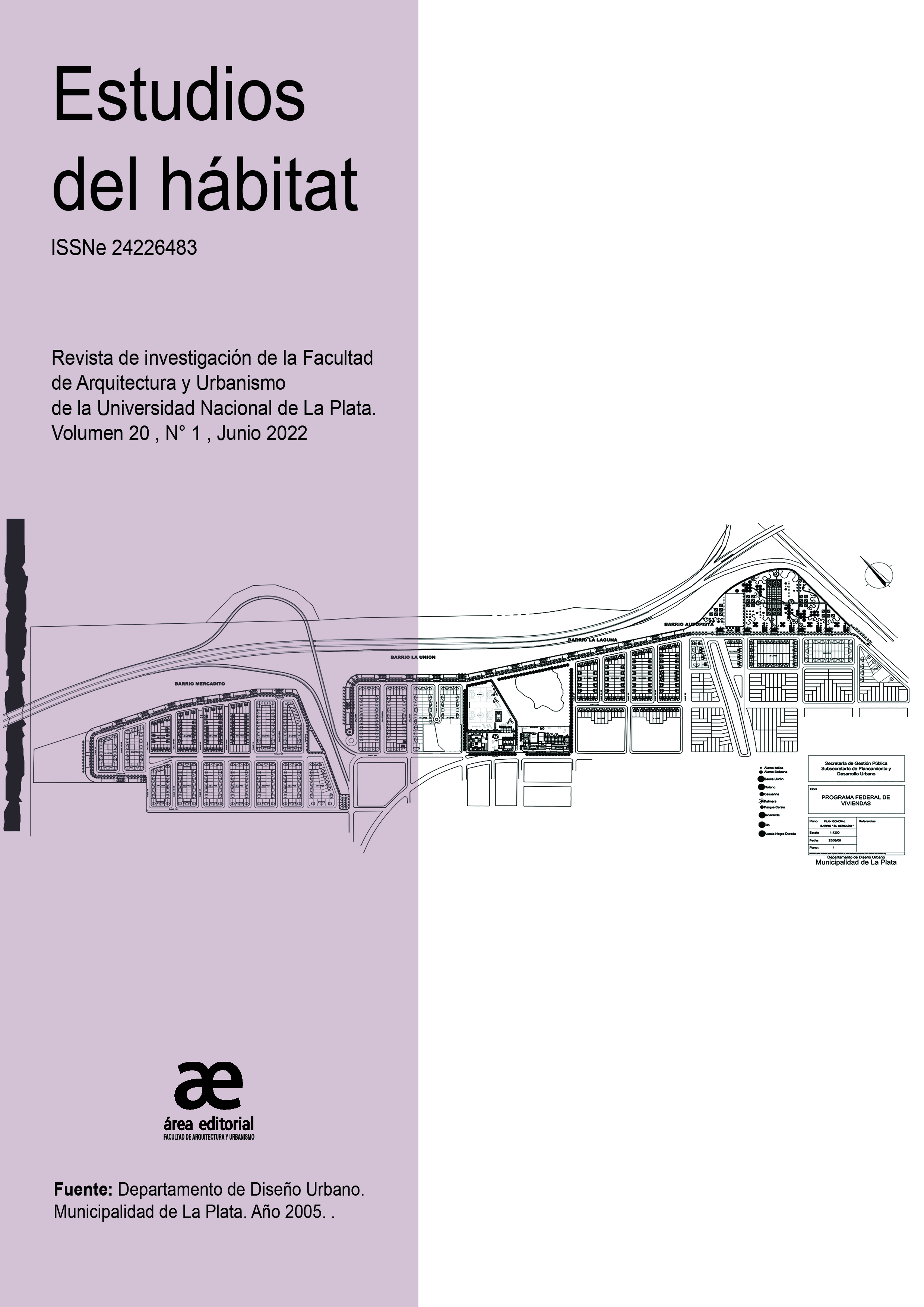Una nota breve sobre desastres naturales y crecimiento
DOI:
https://doi.org/10.24215/24226483e108Palabras clave:
desastres naturales, crecimiento, inundaciones, modelo de SolowResumen
Los desastres naturales constituyen una seria amenaza a nivel global. Cada año una creciente cantidad de desastres naturales tiene lugar en diferentes regiones del mundo (Centre for Research on the Epidemiology of Disasters [CRED], 2020a), y se espera que esto se profundice, a futuro, a consecuencia del cambio climático (Intergovernmental Panel on Climate Change [IPCC], 2018). En esta nota breve se analizan las predicciones teóricas del impacto de los desastres naturales sobre el crecimiento económico, con especial énfasis en los contrastes presentes en los diferentes modelos.
Descargas
Métricas
Citas
Aghion, P.; Howitt, P. (2009). The economics of growth. MIT Press.
Albala-Bertrand, J. (1993). Natural disaster situations and growth: A macroeconomic model for sudden disaster impacts. World Development, 21(9), 1417-1434.
Benali, N.; Abdelkafi, I.; Feki, R. (2018). Natural-disaster shocks and government's behavior: Evidence from middleincome countries. International Journal of Disaster Risk Reduction, 27, 1-6.
Berlemann, M.; Wenzel, D. (2016). Long-term Growth Effects of Natural Disasters - Empirical Evidence for Droughts. Economic Bulletin, 36(1), 1-14.
Brata, A.; Groot, H.; Zant, W. (2018). The Impact of the 2006 Yogyakarta Earthquake on Local Economic Growth. 2, 203-224.
Cavallo, A.; Cavallo, E.; Rigobon, R. (2014). Prices and supply disruptions during natural disasters. The Review of Income and Wealth, 60(S2), 449-471.
Cavallo, E.; Galiani, S.; Noy, I.; Pantano, J. (2013). Catastrophic Natural Disasters and Economic Growth. The Review of Economics and Statistics, 95(5), 1549-1561.
CRED (01 de abril 2020a). EM-DAT: The International disaster database. Centre for Research on the epidemiology of disasters. https://www.emdat.be/
CRED (2020b). Disaster Year in Review 2019. CRED Crunch 58.
De Olivera, H. (2017). Natural Disasters and Economic Growth in the Northeastern Brazil: Evidence from Municipal Economies of the State of Ceará. Documento de trabajo, IPECE.
Fomby, T.; Ikeda, Y.; Loayza, N. (2013). The Growth aftermath of Natural Disasters. Journal of Applied Econometrics, 28(3), 412-434.
Guo, J.; Liu, H.; Wu, X.; Gu, J.; Song, S.; Tang, Y. (2015). Natural Disasters, Economic Growth and Sustainable Development in China— An Empirical Study Using Provincial Panel Data. Sustainability, 7, 16783-16800.
Heger, M.; Neumayer, E. (2019). The impact of the Indian Ocean tsunami on Aceh’s long-term economic growth. Journal of Development Economics, 141, 1-17.
Hochrainer-Stigler, S. (2015). Natural Disasters and Macroeconomic Performance: An Empirical Analysis Based on an Econometric Modelling Approach. Journal of Integrated Disaster Risk Management, 5(1), 21-41.
Hsiang, S.; Jina, A. (2014). The causal effect of environmental catastrophe on long-run economic growth: evidence from 6700 cyclones. NBER Working Papers 20352.
IPCC. (2022). Impacts of 1.5°C Global Warming on Natural and Human Systems. In Global Warming of 1.5°C: IPCC Special Report on Impacts of Global Warming of 1.5°C above Pre-industrial Levels in Context of Strengthening Response to Climate Change, Sustainable Development, and Efforts to Eradicate Poverty (pp. 175-312). Cambridge University Press. doi:10.1017/9781009157940.005
Jaramillo, Christian R., (2009 Do Natural Disasters Have Long-Term Effects on Growth? Documento CEDE 24, http://dx.doi.org/10.2139/ssrn.1543453
Karim, A.; Noy, I. (2016). Poverty and Natural Disasters: A Meta-Regression Analysis. Review of Economic and Institutions, 7(2), 1-26.
Keerthiratne, S.; Tol, R. (2018). Impact of natural disasters on income inequality in Sri Lanka. World Development, 105, 217-230.
Klomp, J.; Valckx, K. (2014). Natural disasters and economic growth: A meta-analysis. Global Environmental Change, 26, 183-195.
Lazzaroni, S.; van Bergeijk, P. (2014). Natural Disasters’ Impact, factors of Resilience and development: A Meta-Analysis of the macroeconomic Literature. Ecological Economics, 107(C), 333-346.
Loayza, N.; Olaberria, E.; Rigolini, J.; Christiaensen, L. (2012). Natural Disasters and Growth: Going beyond the Averages. World Development, 40(7), 1317-1336.
Mu, J.; Chen, Y. (2016). Impacts of large natural disasters on regional income. Natural Hazards, 83, 1485-1503.
Munich Re (01 de mayo 2019). Natural catastrophe service. https://natcatservice.munichre.com/overall/1
Noy, I.; du Pont IV, W. (2016). The long-term consequences of natural disasters — A summary of the literature. Working paper 02/2016, School of Economics and Finance-Victoria Business School.
Noy, I.; Nualsri, A. (2011). Fiscal storms: public spending and revenues in the aftermath of natural disasters. Environment and Development Economics, 16, 113-128.
Porcelli, F.; Trezzi, R. (2018). The impact of earthquakes on economic activity: evidence from Italy. Empirical Economics, 56, 1167-1206.
Ratti, M. (2017). The Economics of Natural Disasters: an overview of the current research issues and methods. Working paper 3, CERE.
Rodríguez-Oreggia, E. (2010). The impact of natural disasters on human development and poverty at the municipal level in Mexico. Working paper 43, Center for International Development at Harvard University.
Sánchez, F.; Calderón, S. (2015). Pobreza y desastres naturales en Colombia, 1970-2011: una aproximación desde los municipios y los hogares. Documento 17, CEDE.
Shabman, N. (2014). Natural Disasters and Economic Growth: A Review. International Journal of Disaster Risk Reduction, 5, 157-163.
Skidmore, M.; Toya, H. (2002). Do natural disasters promote long-run growth?. Economic Inquiry, 40(4), 664-687.
Solow, R. (1956). A Contribution to the Theory of Economic Growth. Quarterly Journal of Economics, 70, 65-94.
Swan, T. (1956). Economic Growth and Capital Accumulation. Economic Record, 32, 334-361.
Van Bergeijk, P.; Lazzaroni, S. (2015). Macroeconomics of Natural Disasters: Strengths and Weaknesses of Meta-Analysis Versus Review of Literature. Risk Analysis, 35(6), 1050-1072.
Warr, P.; Aung, L. (2019). Poverty and inequality impact of a natural disaster: Myanmar’s 2008 cyclone Nargis. World Development, 122, 446-461.
Zhao, R.; Zhong, S.; He, A. (2018). Disaster Impact, National Aid, and Economic Growth: Evidence from the 2008 Wenchuan Earthquake. Sustainability, 10, 1-22.
Descargas
Publicado
Cómo citar
Número
Sección
Licencia
Derechos de autor 2023 Dr. Fernando Antonio Ignacio González

Esta obra está bajo una licencia internacional Creative Commons Atribución-NoComercial-SinDerivadas 4.0.
Acorde a estos términos, el material se puede compartir (copiar y redistribuir en cualquier medio o formato) y adaptar (remezclar, transformar y crear a partir del material otra obra), siempre que a) se cite la autoría y la fuente original de su publicación (revista y URL de la obra), b) no se use para fines comerciales y c) se mantengan los mismos términos de la licencia.








.jpg)

















